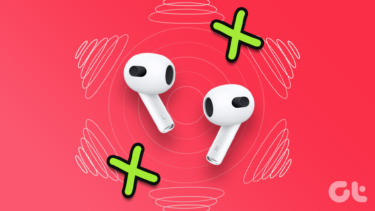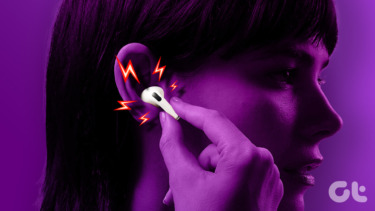You have the option of switching between Noise Canceling and Transparency settings, skipping through your songs with a push of a button, customizing your audio experience and controls, using your phone as a live microphone, can share your music, and have options to locate your AirPods Pro if you misplace them.
1. Noise Cancelling & Transparency
One of the definitive features in the AirPods Pro that the original AirPods do not have is noise-canceling and transparency. These features are unique to the AirPods Pro due to their snug-fitting silicone tips that make a seal for your ear and silence a lot of surrounding noise. What are these settings?
Active Noise Cancelling
Noise-canceling setting is available in the earplugs you use when you’re on a red-eye flight or the pair of headphones that fit so snugly over your ears you have a hard time hearing the person sitting next to you. This is a form of passive noise canceling (the AirPods Pro natural state without any setting) – AirPods Pro has active noise-canceling technology to block out sounds you might hear through passive noise canceling.
Transparency
Transparency is a setting that lets you hear the surrounding ambient noises around you while also allowing you to listen to your music. If you’ve owned the original AirPods, the setting is very similar. Due to the natural passive noise canceling the AirPods Pro provides, the transparency setting allows you to hear the world around you.
Applying Audio Settings to Your AirPods Pro
Step 1: Turn on your AirPods Pro by putting both earbuds into your ears. Step 2: Once your AirPods Pro are connected, go to your Settings app on your iPhone or iPad, and click on Bluetooth. Step 3: Click on the ‘i’ next to your AirPods Pro (you can change their name, shown later in this guide). Step 4: Click between the different settings to hear the difference between them, and to set your preferred audio setting.
2. Squeeze the Stem
Wondering what’s that slender stem kissing your face from the sides? Well, that stemp has a force sensor installed in it for you to control your music. When you give the stem a tap (or a light squeeze) you’ll hear a click if done correctly.
Play and Pause
Give the stem one tap to play and pause the audio.
Skip Forward
If you want to skip to the next song, double-tap the stem.
Go Back
To go back to the previous song, triple-press the stem.
3. Customize Stem Controls
Do you like using controls on the ear buds, but not the default settings? You can customize your controls to suit your needs. Step 1: Once your AirPods Pro are connected, go to your Settings app on your iPhone or iPad and click on Bluetooth. Step 2: Tap on the blue ‘i’ to the right of your AirPods Pro. Step 3: Find the Stem Controls. You can select what each AirPods Pro earbud does. Step 4: You can select:
Noise Control: Switch between Noise Cancellation, Transparency, or having them off altogether Siri: Lets you access Siri, similar to how you would say “Hey Siri…” if you have voice activated control
4. Spatial Audio vs Stereo Audio
We are given the option to switch between spatial and stereo audio with AirPods Pro. What is the difference between the two? Spatial audio is recorded with the intention of recalling sounds to the listener as if you were placed in the middle of a live recording. If the singer was to your right, and the drum sets were to your left, the sound being played back into your AirPods Pro would reflect that positioning. Stereo audio condenses this by delaying sounds by milliseconds to create the illusion of space when recording. These are very generalized explanations. Step 1: Put on your AirPods Pro and make sure they are connected to your device. Step 2: Open the Settings app on your iPhone or iPad, and go to Bluetooth. Wait for your device to find your AirPods Pro unit. Step 3: Click on the blue “i” button next to your AirPods Pro. Step 4: Scroll down until you see Spatial Audio. Tap on Spatial Audio. This will open a new display where you click through the different styles. Make sure both AirPods are in your ear snuggly. Toggle between Stereo Audio and Spatial Audio if you want to hear the difference. Make sure you use audio that was recorded for spatial audio to get the full effect. There are many resources on YouTube, or you can use the built-in audio selection on your device.
5. Name Your AirPods Pro
The default name given to your AirPods Pro once you’ve synced them to your phone follows – Your Name’s AirPods Pro. It’s a functional name, and unlike many other devices with obscure acronyms, it’s very easy to know what device you’re synced to. Apple also allows you to change the name to whatever you like – and this is where you can let your personality shine. Step 1: Access your AirPods Pro menu by opening Settings app on your iPhone or iPad and selecting Bluetooth. Step 2: Click on the blue “i” button next to your AirPods Pro. Step 3: Click on the arrow (>) on the Name tab. Step 4: Click on the default name given to you to change it and change your AirPods’ name. The new name you give to your AirPods Pro will show up on any application you use to connect to your AirPods: Bluetooth menu, Find My App. This is a great way to distinguish your devices if you have more than one set of AirPods connected to your device.
6. Check Your Fit
When you open your box of new AirPods Pro, you may notice that there is a little container holding two tips in different size that you can use. Depending on the size of your ear canals, you may need to change the tips to have a more secure fit. This is great to ensure that your AirPods stay in your ear while exercising and create a proper noise cancellation and comfort seal. Step 1: Access your AirPods Pro menu opening Settings app on your iPhone or iPad, and selecting Bluetooth. Step 2: Click on the blue “i” button next to your AirPod Pro. Step 3: Click on ‘Ear Tip Fit Test.’ Make sure each AirPods Pro is fit snuggly into your ears, and sits comfortable as you would wear it throughout your day. Step 4: Select Continue, and tap the blue button to begin the Ear Tip Fit Test. The following audio is a little loud and may be startling at first if you’re not expecting it. Step 5: Review your results – did you have a proper seal? Did one or both AirPods Pro pieces in need of adjustment? You can change the tips or try wiggling the AirPods into place, so it fits snug in your ear and try the test again.
7. Share Audio via AirPlay
One easy way to share audio with your friends is to give them one of your AirPods, and while this does work, you are going to lose some of the spatial audio effects that we have enabled on our AirPods. If your friend has their own pair of AirPods, AirPods Pro, or Beats headphones connected to their iPhone, iPad, or iPod touch, you can share your audio with them. Step 1: Wear your AirPods Pro and make sure they’re connected to your iPhone and have the music you want to share playing. Step 2: From your Lock Screen and click on this symbol to the right of your song. Step 3: Click on Share Audio. Step 4: Click on Share Audio on your iPhone. If this option isn’t showing up, you may need to move closer to your friend’s device. Step 5: Ask your friend to Join on their phone or connect to their AirPods, AirPods Pro, or Apple Beats.
8. Use Live Listen
Live Listen that turns your iPhone into a wireless microphone that streams to your AirPods Pro. This is helpful if you’re in a busy coffee shop and need to talk to someone but can’t hear what they’re saying. Step 1: Open the Settings app on your iPhone or iPad, and click on Control Center. Step 2: Scroll through the list of options until you find the Hearing button. Click on the plus (+) sign next to it. We are adding the Hearing button to our Control Center. Step 3: Connect your AirPods Pro units to your iPhone and put them on. Step 4: Swipe up from the bottom of your screen to access the Control Center. Click on the Hearing button, it looks like an ear. Step 5: Click on Live Listen. The microphone on your iPhone will amplify the surrounding sounds, so move it close to the person you are trying to hear. Adjust the volume as needed. You can check the volume of your microphone (audio is projected from your phone) by seeing how many of these circles turn white. The more circles fill, the louder the audio. Step 6: When you no longer want to use this feature, click on Live Listen again to turn it off.
9. Finding Lost AirPods Pro
When you misplace your phone, you want to give it a ring to try and locate it via sound – did you know you can do that with your AirPods Pro too? If you’re a little forgetful or in the rush of the moment, put your AirPods Pro down and forget where you put them. Apple has a feature to help you! As long as your AirPods Pro is near any of your Apple devices and connected to Bluetooth (meaning, this won’t work if they’re out of battery), you can play a sound to help you find them through the Find My app. Step 1: Open the Find My app. If you do not have the app, you can download it. Download Find My Step 2: Click on the Devices tab. This will open a menu with all your Apple Devices. Step 3: Find your AirPods Pro that you have misplaced on the list. It will open a menu that will list the last seen location. Step 4: Make sure you don’t have any AirPods in your ear, the sound emitted is very loud. Tap Play Sound to play a sound that will gradually get louder. You can select which AirPods Pro you are looking for and have the sound emitted from both or one at the same time. Your Airpods Pro must be charged for this to work, and must be close enough to be within range of your phone.
Become an AirPods like a Pro!
There are so many features built into the AirPods Pro that make them a very useful and helpful piece of technology. Learning to use your AirPods Pro will help make your life more enjoyable, and also help you if you ever need it. The above article may contain affiliate links which help support Guiding Tech. However, it does not affect our editorial integrity. The content remains unbiased and authentic.



































![]()